
First and Only Weekly Online Fanzine Devoted to the Life and Works of Edgar Rice Burroughs Since 1996 ~ Over 15,000 Webpages and Webzines in Archive |

First and Only Weekly Online Fanzine Devoted to the Life and Works of Edgar Rice Burroughs Since 1996 ~ Over 15,000 Webpages and Webzines in Archive |

 |
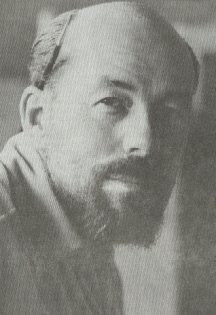 |
 |
John Coleman Burroughs was born in Chicago, Illinois on February 28, 1913 -- just at the time that his father's famous creation, Tarzan, was beginning to catch on. February was same month in which his father, Edgar Rice Burroughs, decided to make a full-time career of writing. In fact, ERB dedicated the first novel he wrote, A Princess of Mars, to young John. "John" was obviously a favourite name of ERB's -- as well as giving the name to his youngest son, he also christened his two best-known heroes with the name, and even used it once as a pseudonym: John Tyler McCulloch. The ancestor of whom Ed was most proud was Virginia settler, John Coleman. Coleman was also Ed's brother's name. JCB (Jack) and his older sister and brother – Joan (pronounced Jo-Anne) and Hulbert (Hully) – were all brought up on Tarzan stories and were encouraged to develop a great appreciation for the outdoors and nature. By all accounts ERB was an excellent father and his most prolific and artistic writing period coincided with the period of time when his three children were probably most demanding. He had said, "Were I literary and afflicted with temperament I should have a devil of a time writing stories..."ERB was a complex man who had few real friends, but two of his closest friends and confidantes throughout the rest of his life would be his sons, John and Hulbert. In discussions with them he shared his dislike for any form of organized religion, and often called himself an atheist, but he obviously had a great respect for intelligent reason, humanism and nature. He imparted in his sons a code of love and understanding of wildlife that was over a half century ahead of the current ecological movements. The family went on many outdoor excursions together, the first being a cross-country trip from Chicago to California in 1913 -- Jack was a six-month-old infant at the time. A more rigorous automobile camping tour was undertaken in 1916. The San Fernando Valley ranch, to which they moved in 1919, was full of abundant wildlife and the family spent countless hours exploring its rugged untouched terrain, both on foot and horseback -- roaming from Pacific beaches, through arroyos and up mountainsides.
The famous ERB Doodad was created during one of their outdoor adventures in the high Sierras in 1924 when Ed sketched it out in the sand on a riverbank. This symbol was to become the famous colophon which appears on most of the ERB books. Each family member, however, had his own special variant of the doodad: Ed's circle was to the right of the "spear," Hulbert's circle was below, and Jack's was to the left. The family embarked on numerous other auto expeditions: the Grand Canyon area in August, 1926 and Death Valley in April 1933.
The Burroughs family moved to California when Jack was six, and settled on the 550-acre Harrison Gray Otis, Mil Flores estate, which they re-christened Tarzana. The Burroughs children were constantly exposed to activity and excitement: meeting celebrities, visiting movie sets, horseback riding and motoring with their famous father. Young Jack, perhaps the most sensitive of the three Burroughs children, showed an early aptitude for art and was given his first lessons by his father who himself was quite a good cartoonist. “Papa,” as Jack called his father, would encourage him by telling him wild tales, showing him the fundamentals of drawing and encouraging his creative interests at every opportunity.
Both boys soon were enrolled in LA's Page Military Academy but when eight-year-old Jack, a sensitive and timid child, couldn't adjust to the strict regimen he was pulled out in mid-year and tutored at home for the rest of the year. The boy had nearly died of diphtheria soon after their move to Tarzana and later, in 1921, both Jack and Hulbert contracted mild cases of polio. As a result, Ed and Emma were worried about them being exposed to diseases in public schools. Around the time that he was being tutored at home, Jack was enrolled, temporarily, in the Hollywood School for Girls. Both boys eventually were enrolled at the Los Angeles Coaching School. Later, Jack attended Urban Military Academy and later, John Burroughs and Van Nuys High Schools, graduating in 1930.
During this schooling period, Jack achieved an early success in creative writing. His father helped him in writing poetry and developing metre. Undoubtedly influenced by his father's stories, he composed fantastic science fiction serials, devising plots about monsters coming out of the ocean or collisions between planets. He provided his own illustrations for these stories. His interest in drawing had been noticeable several years before, when he began copying or tracing the colourful illustrations made by J. Allen St. John. Other students would wait eagerly to read Jack's stories and hear each new installment of the serials which he read in class. He was emulating his father's style of cliffhanger endings. Expanding upon his writing skills, Jack took on the role of sports editor at Van Nuys High School. A curious choice for one who did not like sports at the time. He dreaded writing up the football or basketball games and usually turned in his assignments at the last moment.
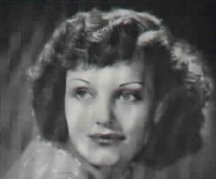 |
Born: 6 March 1916, Oklahoma City
|
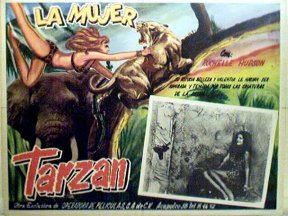
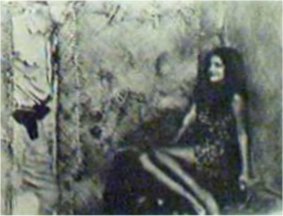
One of his best friends at school was Rochelle Hudson, a movie starlet at 13. Since she lived near Ventura Boulevard, she was often given a ride to school by Jack and Hulbert. Snubbed by most of her schoolmates because of her fame as a movie star, she became a good friend of the Burroughs family and even took vacation trips with them.On one occasion, sixteen-year-old Jack drove Rochelle and her mother on a trip to Oklahoma City. Living so close to Hollywood, coupled with their father's association with the film industry, offered many advantages to the Burroughs kids. In 1920 a film company gave them lion cubs and monkeys for Christmas. The monkeys turned out to be quite vicious, however, and the lions had voracious appetites -- a more suitable home was soon found for the animals.
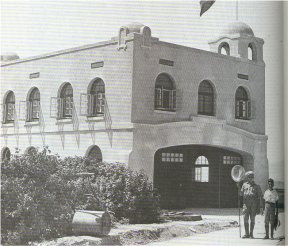
Ed treated the family and even members of the Hollywood community to regular showings of feature films in the ballroom of a building he had built near the main house. The second story of the building contained a darkroom and ERB's study which was used as a schoolroom where the children were tutored. Another source of excitement for Jack was the number of films which were shot on location in the canyon on the back of the ranch. ERB's novel, The Girl from Hollywood, actually presents a thinly veiled description of Burroughs family life on Tarzana Ranch in the twenties.
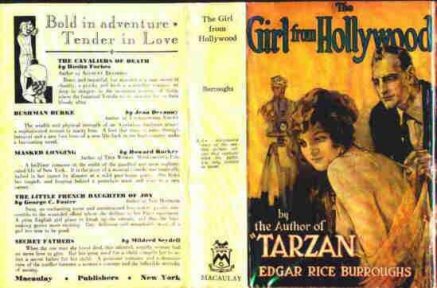
Pursuing his interest in art, John Coleman enrolled in Pomona College in 1930. Before he left for college, his father had confided that he was not in agreement with much of what colleges stood for and also that he feared that Jack would meet literary people who would deride the Burroughs stories. Ed urged his son not to take these criticisms seriously and repeated statements he often made about his work. He had no pretensions about being a skilled or profound writer; his sole purpose was to create entertainment for the reader. Jack shared his father's appreciation of classical art and he worked hard to learn the basic techniques of the old masters. In one of the courses he studied anatomy by dissecting a human cadaver.He recalls working in the "Biology Department basement at night with children's big eyes watching me through the high basement window as I worked on my half of the specimen assigned to me." Jack was very successful in his four years at Pomona College and he graduated with honours in 1934 (Phi Beta Kappa, magna cum lauda). For his graduate project he acquired some real sabre-tooth tiger bones from the Los Angeles County Museum, which had recovered them from the La Brea tar pits. He then used these bones for inspiration in the creation of a model of a saber-tooth tiger, which was considered an outstanding piece of work and was placed on exhibition at the Los Angeles Art Museum.
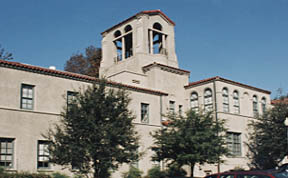
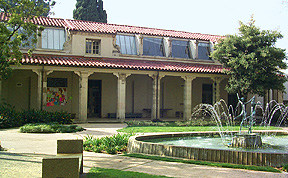
Influenced by his father's interest in flying, Jack took weekend flying lessons in 1934, but it was around this time that his father and mother separated, an event which had a tremendously disruptive effect on the entire family. Ed had often confided in both of his sons as to the difficulties presented to his marriage by their mother's drinking problem, but the actual separation proved to be a great shock. Hully and Jack moved with mother, Emma, to a house in Bel-Air, a stylish suburb west of Beverly Hills and from then until her death on November 5, 1944, they took on much of the responsibility of caring for her. Jack had explained the situation by saying, "My father was sensitive and idealistic about women. He wanted them to be like his heroines, fine and virtuous. The idea of his wife as a victim of alcohol was difficult for him to accept. His generation thought that drinkiing by women was immoral." Although Jack and the rest of the family obviously did not fully approve of Ed's developing relationship with family friend and one-time movie starlet, Florence Dearholt, he and Florence's brother, Eddie Gilbert did become good friends.Jack married Pomona classmate, Jane Ralston, on 12 December, 1936 -- they were both 23 years old. Jack and Jane's first child -- John Ralston -- was born on 22 June, 1942 (less than two months after Ed's May 4th divorce from Florence). Their second son, Danton, was born on 2 June, 1944 and they later had a daughter, Dian. Today, all three of the children carry on the Burroughs legacy by being actively involved in the arts, entertainment and the running of ERB, Inc.
All of Edgar Rice Burroughs' children were fans of their father's writing, but only JCB has actually added significantly to ERB's works with new creative material, although Hulbert was very involved in ERB, Inc.business matters. Since John grew up in an atmosphere saturated by his father's famous creations, it is not surprising that one of his major influences was J. Allen St. John, who illustrated most of the early ERB works. Nor is it surprising that his first excursions into the professional art world would be influenced by ERB themes. After graduating from Pomona, John did preliminary work, with friend and former Otis Art Institute classmate, Bob Clampett, on an animated version of John Carter of Mars. Clampett, who had developed the Porky Pig and Merrie Melodies cartoons at Warner Brothers, convinced ERB of the potential of developing his fantastic stories into animated features. Since Clampett was still holding down a full-time job at Warners, the work on their short test film had to be done at night and on weekends. Clampett did the animation, while Jack and wife Jane painted the cells and designed the characters. ERB took the finished product to MGM but, although they were interested, they believed that such a project should involve the wildly popular Tarzan which already had a proven name. So, in 1936, Burroughs travelled to Chicago and New York to lay the ground work for launching a Tarzan cartoon feature under the company name Tarzantoons, Inc. He even convinced J. Allen St. John to help out with the project but when Leon Schlesinger offered Clampett a chance to head up his own production unit at Warners, the Tarzan project fizzled. If they had sold A Princess of Mars, it would have been the first full-length serious cartoon ever done -- preceding Disney's Snow White by quite few years. The Tarzan cartoon was to be a short, featuring a serious Tarzan, with the animals providing comedy relief.
See illustrations from the John Carter Animation Project at: ERBzine 2175 and ERBzine 2176 and
www.johncarterofmars.ca and www.barsoom.com
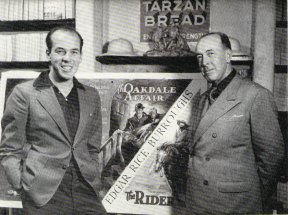
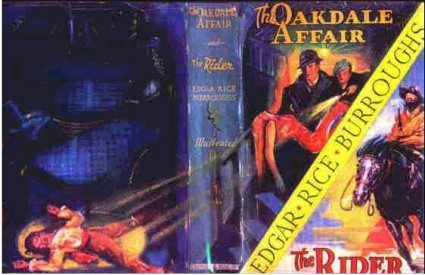
At age 23, he was given the chance to illustrate his father's book, The Oakdale Affair and the Rider, a combination of two 1918 magazine stories which the author finally got around to publishing on February 15, 1937. A few months earlier, Ed had written to St. John: "...it has always been the ambition of my son, Jack, and myself that one day he would illustrate one of my books. He is doing very excellent work, and I am having him illustrate the Spring book for us." Jack commented at the time that he was well aware he had not yet attained the ability of a St. John, but was deeply grateful to his father for the unprecedented opportunity afforded him. JCB was very dedicated to his art and threw himself completely into his work, striving hard to justify his father's faith in him. He used his wife, Jane Ralston, and his brother-in-law, James Pierce as models for the dust jacket, which he painted on a 30" x 50" canvas. The cover and the two interior illustrations were a success and he matured rapidly as an artist. He went on to illustrate all future ERB books published during the author's lifetime - a total of over 125 illustrations.
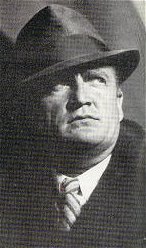
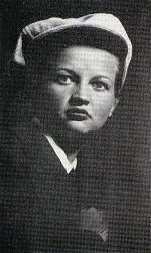
Perhaps one of the most curious and unique projects that JCB and his father collaborated on came about in 1937. Popular Hollywood actress, Colleen Moore, invited ERB to contribute a tiny Tarzan book for her miniature Fairy Castle Collection at the Museum of Science and Industry in Chicago. What she received was an original fable featuring a princess and Tarzan, Jr. written by ERB and illustrated by John Coleman Burroughs. The unusual thing about this story is that it was printed, by hand, in a one-of-a-kind, one inch by one inch, miniature book.
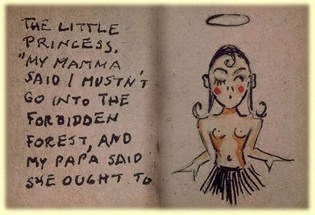
In the fantasy and science fiction field, John Coleman and Hulbert collaborated on two novelettes, The Man Without A World and The Lightning Men, which appeared in the June 1939 and February 1940 issues of Thrilling Wonder Stories. They then wrote a novel, The Bottom of the World, which appeared in the September 1941 issue of Startling Stories complete with seven illustrations by JCB. Hybrid of Horror, written in collaboration with Jane Ralston Burroughs, appeared as the feature novelette in the July 1940 issue of Thrilling Mystery.JCB's first venture into comics was for Dell's The Funnies, in which he took over a John Carter of Mars strip. His work was featured in issues #34 (August 1939) through #56 (June 1941) with a total of 152 pages. Twelve pages introducing the Chessmen of Mars, never reached publication. Dell reprinted much of the John Carter art from The Funnies (nos. 30 through 39) in a 1940 Fast Action Book for which JCB did the cover. JCB's art has appeared on the covers of several Whitman Publishing Company Better Little Books, including four of the Tarzan titles: Tarzan the Untamed, Tarzan the Terrible, Tarzan and the Golden Lion and Tarzan and the Ant Men. The Untamed and Terrible BLBs included JCB flip animation in the upper right hand corners. Other Whitman assignments included covers and animations for The Shadow and the Ghost Makers and Inspector Charlie Chan. Whitman also published a John Carter story in a Big Little Book in 1940 which was a new original publication with story, cover and illustrations by JCB. An expanded re-working of this story would eventually appear in the January 1941 and April 1961 issues of Amazing Stories as John Carter and the Giant of Mars. It then appeared in the book, John Carter of Mars, published by Canaveral Press and Ballantine Books
Another 1940s comics adaptation was David Innes of Pellucidar for which he drew 32 pages. The first 12 pages appeared in Hi-Spot Comics. All 32 pages, plus related sketches were eventually published in 1968 by Greystoke Press in a 56-page booklet.
In 1941, he wrote and illustrated 69 weeks of a syndicated colour Sunday newspaper strip, John Carter of Mars which debuted in The Chicago Sun, December 7, 1941. This debute coincided with the Pearl Harbor attack, resulting in the series being picked up by very few papers. The strip began with a Princess of Mars adaptation but departed from the original with episode 5. JCB explained that this was done at the request of United Features Syndicate in order to provide more action in the weekly episodes. Continuing with the Burroughs tradition of family involvement, John's wife, Jane Ralston Burroughs, helped with the backgrounds, inking and lettering of the strip and even served as model for Dejah Thoris.
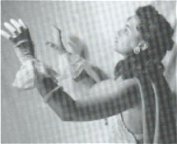
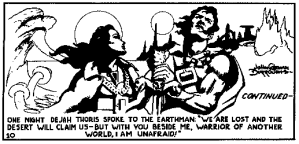
As with all of his art projects, he entered into the work with full abandon -- going so far as to create a model Barsoomian thoat with many moving parts. However, fierce competition among the newspaper strips, brought about by wartime paper shortages and the general upheaval in the publishing industry, resulted in the folding of the John Carter series in March 1943. JCB then went to work for the Douglas Aircraft Industrial Training Department where he wrote and illustrated a number of WWII training manuals. Then, after some time with Warner Brothers and Universal Studios art departments, JCB decided to devote more of his time to his own art, specializing in unusual action, scenic pictures of the West and old Mexico and exotic portraits. His best work involves portrait studies of native Americans and Mexicans done in boldly brushed colours.When speaking of illustrating his father's books, John Coleman said, "I believe J. Allen St. John, who illustrated Dad's stories, caught the spirit of them better than anyone has since. I hope someday to be able to do this job as well as he - which is a high mark to shoot for, anyway."
Many years ago when JCB was very young and like thousands of his father's fans was actually living the part of Tarzan in playful pretense, he was following his father's footsteps, nose to the ground and on all fours. "What in the world are you doing, Jack?" his father asked. "I am following your spoor," his young son replied. And although JCB is famous and successful in his own chosen field, it was by following the trail blazed by his father that it was possible for him to give pleasure to the mind and eyes of Burroughs fans by creating new adventures, in text and pictures, for ERB's characters.
Edgar Rice Burroughs died on 19 March 1950 and was cremated at the Chapel of the Pines in Los Angeles. Following his father's wishes, Jack picked up the ashes on March 27 and they were buried beside Ed's mother's remains under the Black Walnut tree that shaded the ERB, Inc. offices in Tarzana. After the death of his father, he shifted his talents from illustration and back to fine art.
JCB worked constantly on technique. According to his second wife, Mary Burroughs, they first met when he was enrolled under an assumed name in a summer night course at Pierce Community College in the '50s (a college where he later was hired to teach art classes). He had joined the class because it offered him an opportunity to work with live models and to mix with other serious artists. Mary claims that one of his major influences was the Russian/American artist, Nicolai Fechin (1881-1955) with whom he studied after he left Pomona. The Fechin influences are especially evident in his bold brushed colours and his portrait styles.

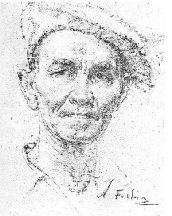
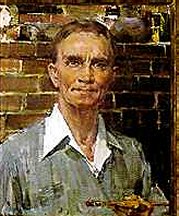
John and Jane Ralston divorced in 1961 and Mary and he married soon after, on December 16, 1961. It was around this time that he contracted what was later perceived to be meningitis or encephalitis on a trip to Tijuana. He was close to death for some time but survived. Mary believes that it was actually this disease which brought on the condition that was diagnosed as Parkinson's -- the crippling effects of which he battled until his death 18 years later. Jack sought the best medical treatment available. For awhile he was under the care of the now-famous neurologist, Oliver Sachs (he was played by Robin Williams in the movie Awakenings). Thanks to Hulbert’s assistance, he was able to obtain permission to become one of the first Americans to use the then-experimental drug, L’Dopamine – with many positive results. He refused to accept that he had contracted the disease which had disabled his father in his last years, and spent many of his final years battling depression and debilitation which robbed him of his ability to paint. John and Mary divorced after 11 years of marriage. The years that Mary and her children shared with John were bittersweet – he was in poor health for much of the time but his charisma and aura obviously left them with unforgettable memories of his love, warmth and courage.
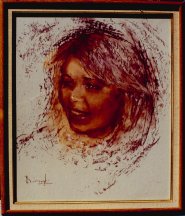
JCB's last novel, Treasure of the Black Falcon, was published by Ballantine Books, Inc., March 1967. It had been written twenty years earlier but was shelved and forgotten after numerous rejections. During the Burroughs boom of the '60s, however, Hulbert came across the manuscript and submitted it to Ballantine where it was eagerly accepted. John Coleman's dedication in the book reads: "To my brother Hulbert who found the Treasure." Ballantine's cover blurb reads: "A new name in fantastic adventure -- a name that perpetuates the best traditions of the creator of the Tarzan and Mars books. Bursting with action, packed with new ideas, TREASURE OF THE BLACK FALCON is thrilling adventure in the grand tradition. Ballantine Books is proud to be the publisher of JOHN COLEMAN BURROUGHS."John Coleman Burroughs died on February 22, 1979
The works of art created by John Coleman Burroughs have been exhibited in galleries and one-man shows throughout the United States and his portraits and western paintings adorn the homes of many celebrities. John Coleman's second wife, Mary, remembers the day, while driving down Ventura Boulevard, they saw one of his paintings for sale in the window of an art gallery. John recognized it as one that used to hang in the Harpo Marx house which had been sold after his death. John and Mary bought back the painting. She also recognized one of John's paintings hanging in Barry Goldwater's house in the newspaper pictures which were published after his death. Probably the largest collection of John's paintings is owned by son Danton and ERB, Inc. The best printed compilation of his work is exhibited in The Edgar Rice Burroughs Library of Illustration by Russ Cochran. Volume 2 of this three volume set is dedicated to JCB and features most of his ERB art and comic strip work. It is a gorgeous rare limited edition with copies owned and treasured by most members of the Burroughs family and many of the late artist's friends.
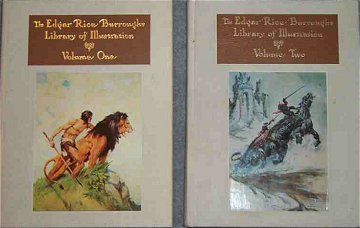
![]()
|
(See JCB Gallery II)
|

|
JOHN COLEMAN BURROUGHS for cover illustrations see the JCB Gallery I in ERBzine 0166 and the following titles in ERB C.H.A.S.E.R. Encyclopedia The Oakdale Affair and the Rider 1937 |
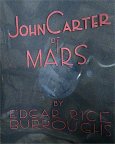 |
PROMOTIONAL PORTFOLIO BY JOHN COLEMAN BURROUGHS http://www.ERBzine.com/mag21/2175.html |
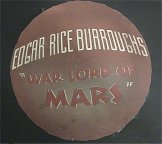 |
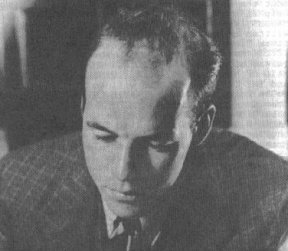
JOHN COLEMAN BURROUGHS WEB TRIBUTE CHAPTERS


BILL
HILLMAN
Visit
our thousands of other sites at:
BILL
and SUE-ON HILLMAN ECLECTIC STUDIO
ERB
Text, ERB Images and Tarzan® are ©Edgar Rice Burroughs, Inc.-
All Rights Reserved.
All
Original Work ©1996-2004/2018 by Bill Hillman and/or Contributing
Authors/Owners
No
part of this web site may be reproduced without permission from the respective
owners.